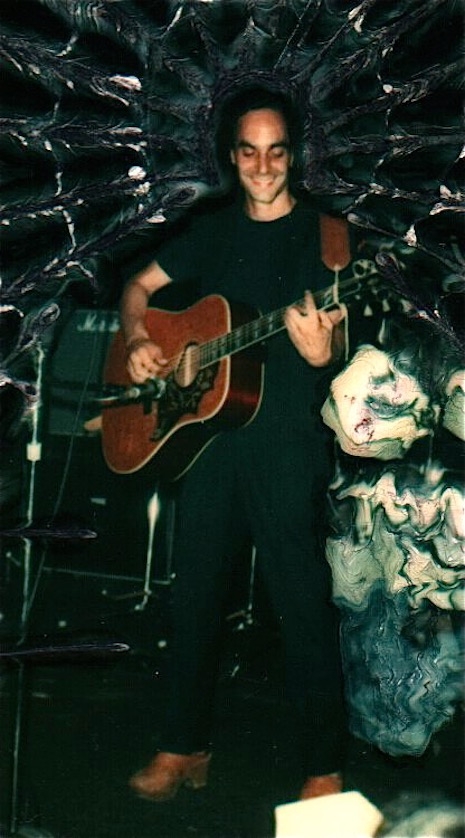
Yesterday, we told you about “tax scam records,” and the incredible story of Richard Goldman, the exceptional singer-songwriter who made the shocking discovery that two versions of an album—largely made up of his tunes—had been released without his knowledge. But that’s not the end of this strange tale. Decades had gone by, when Richard happened upon yet another LP of his songs, the vinyl pressed up by a similarly mysterious record company. How did this happen—again?

Sweethearts was released by Granya Records in 1977. The album was comprised of studio demos Richard recorded between 1971 and 1974. Sweethearts was distributed by Album World, a division of International Record Distributing Associates (a/k/a IRDA). Based in Hendersonville, Tennessee, IRDA was formed in 1974 by Hank Levine and Mike Shepherd, two record industry veterans. The year they opened for business, the pair told Billboard magazine that IRDA was an “association of small independent labels, with the strength and distribution of a major label.”
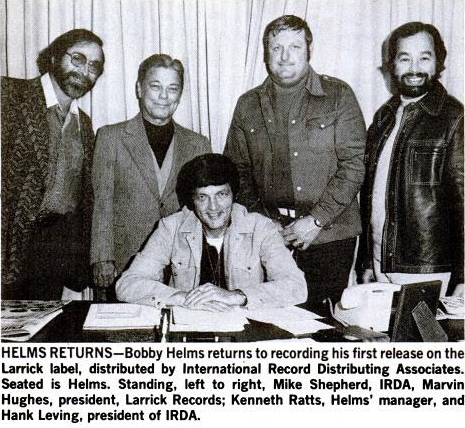
Billboard magazine clipping, 1975.
By 1977, IRDA was manufacturing tax shelter albums for a variety of labels, many of which seem to have been established solely to take advantage of the tax credit. Levine and Shepherd were responsible for creating the finished product and then distributing the records via their Album World and Album Globe subsidiaries. It isn’t known how many tax shelter albums Levine and Shepherd distributed, but it’s estimated to be well over 100 titles, including LPs of Beatles and Led Zeppelin material.

‘The Fantastic Dena Carrol,’ Lanark Records, 1977. Distributed by Album World. The cover art recalls both Marilyn Monroe and a certain Lou Reed LP. Note the price tag.
The conventional wisdom among collectors of “tax scam records” is that Levine and Shepherd sold tax shelters to investors and then created new, fake record labels for each release. But that wasn’t the case. What happened was, the labels—companies that were often established for one-time only tax shelter albums—came to Levine and Shepherd. In the tax shelter orbit, it was known that they could do the required work.
I spoke with Jack Millman, one of the biggest players in the tax shelter game. Millman had a trove of master recordings—obtained through various connections in the music industry—which he provided to tax shelter labels. He told me about the people in his circle, and that included Levine and Shepherd. As part of a 1985 federal case—in which the investor in a tax shelter record was denied tax credits related to said album—the court noted Millman had recommended the services of IRDA.
Album Globe distributed the tax shelter record comprised of Christmas messages recorded by the Beatles, but Levine and Shepherd were removed enough from the equation that neither they nor their companies are mentioned in the lawsuit filed by the group’s lawyers.
Granya Records was likely just another tax shelter label hipped to the professional services of Levine and Shepherd. Sweethearts is the only known Granya release. Who exactly was behind Granya is still unknown, though I have a hunch.

Through my research, I learned that Granya, Incorporated was established in 1975, listing a post office box in San Marino—a city in Los Angeles county—as their address. The owner of the company is also the CEO of a real estate agency in Southern California. I called the agency, and left messages requesting an interview on the CEO’s personal voicemail, but have yet to receive a response.
In 1977, the year Sweethearts was released, Granya, Incorporated was the only registered company in the United States using the name “Granya.”
But who provided the tape of Richard’s songs? Richard says that all roads lead back to his first manager. When he first saw the photo used for the cover of Sweethearts, Richard figured it had to have been he who provided it. The former manager has paid for the photo shoot, which took place on the Santa Monica Pier, and he’d likely have the only copy of the image. But it wasn’t just the photo that made Richard think he was behind it. Once he acquired the album, he noticed all of the credits were correct—facts only his former manager would be knowledgeable of—and all of the mixes of the songs were those he’d favored.
The probable scenario is that he’d sold the tape of Richard’s demos directly to Granya, though the label might have purchased the recordings from a broker, like Jack Millman.

Sound City, 1973.
The eleven songs on Sweethearts were recorded at Paramount Studios, Sunset Sound, and Sound City between 1971 and 1974. All tracks were produced by his former manager, who also paid for the sessions.
As is the case with Richard’s other tax shelter album, Almost Famous, Sweethearts functions as proof of his songwriting chops and ability to write great material under a variety of guises. The left of center country tunes, inspired by a Richard favorite, Gram Parsons, are amongst the standouts from the album.
“Don’t Cry Christine,” the first cut on Sweethearts, resembles the work of Parsons’ groundbreaking country rock band, the Flying Burrito Brothers. Here, the undeniably gorgeous harmonies were executed by Richard and bandmates in Hummingbird, his hometown group from New Rochelle, New York.
“Saturday Nighttime” is a dead ringer for the type of old-school country found on Sweetheart of the Rodeo, the lone Byrds record with Parsons. P-Funk mastermind George Clinton is likely playing piano on this track.
The LP is named after “Sweethearts,” another country tune, with Richard name checking Sweetheart of the Rodeo in the very first line.
The venomous “All Dressed Up to Go,” on the other hand, is by no means country. Here the style is akin to future punk singer-songwriters like Joe Jackson and Elvis Costello. Richard’s vocal phrasing uncannily resembles Costello, whose debut album was still a few years away (Richard’s now a huge fan of EC).
And George Clinton is definitely tickling the keys on this one. “I had no idea who he was at the time,” Richard admits today. Though he didn’t know who he was, Richard remembers what he thought when he heard Clinton play: “Holy shit, he’s good.”
The wistful “Memory Lane” is a fine example of Richard’s pop prowess. This recording is all Richard—he plays all the instruments and sings all the parts. Dig the Beach Boys-like harmonies.
On the front and back covers, the album was credited to the artist “Gold,” which amuses Richard. “I think they thought Goldman was maybe a little too Jewish.”
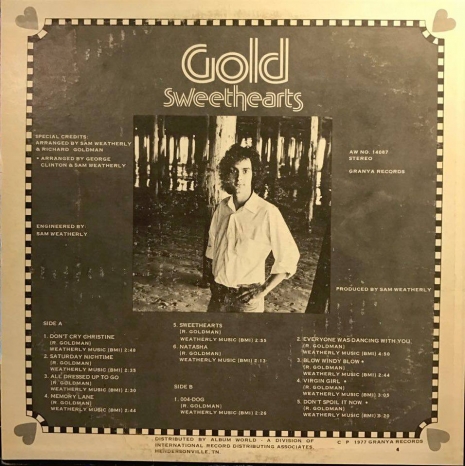
The back cover of ‘Sweethearts.’
Richard learned about the existence of Sweethearts through a review of the LP on a website called Bad Cat Records. A section of the site is devoted to tax shelter records, which includes album reviews. For Richard, finding out that “there was yet another tax shelter record,” is “up there with one of the oddest things that’s ever happened to me in my life.” He was struck by the reviewer’s spot-on impressions of the material—recordings from Richard’s distant past that he hadn’t heard in decades—particularly the comparisons to the Flying Burrito Brothers and Harry Nilsson, artists he aspired to be like when he was 20. It was all too much, and Richard began to tear up.
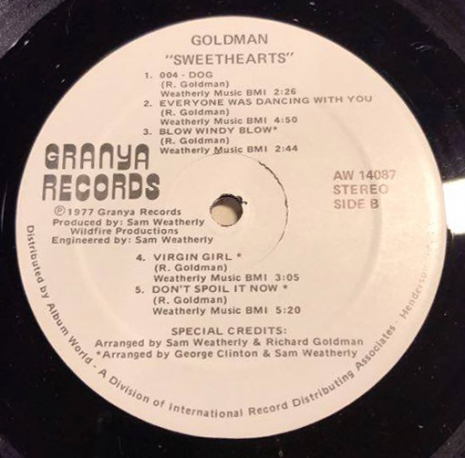
After he became aware of Sweethearts, Richard attempted to contact his former manager. Though in the process he renewed his friendship with his brother, he wasn’t able to reconnect with the former manager himself. Richard would still like to speak with him, as the man wasn’t just his manager, but also a parental figure and a friend.
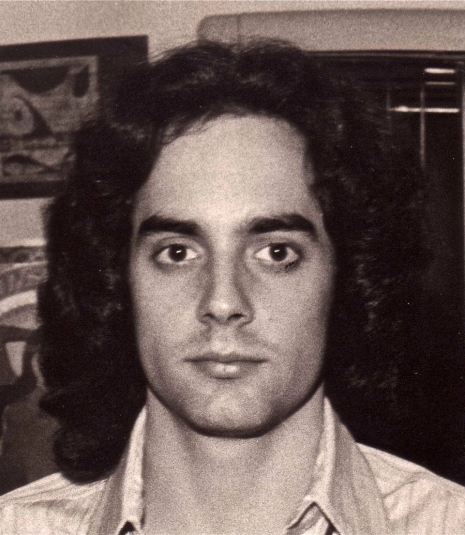
Richard had several near misses with the big time. The Carpenters nearly released one of his songs; he almost had a deal with Elektra Records—twice; and Bee Gees manager Robert Stigwood was interested in signing him, but that, too, failed to come to pass. But Richard’s more than content with how it all turned out.
[There’s] no darkness there at all. Because somehow my brain is convinced that if anything like that had ever happened, the rest of my life gets so ultimately altered that nothing works out right in that way. Every little miss was just exactly right.
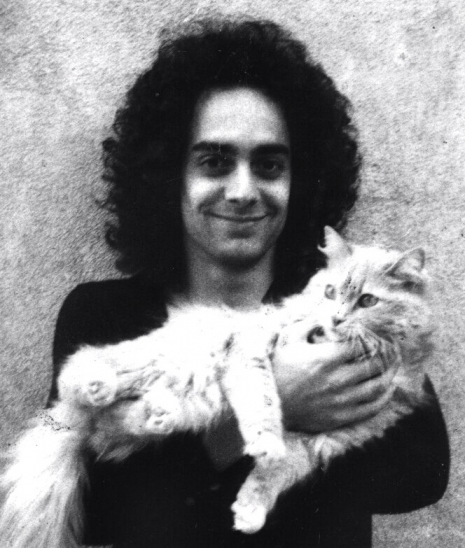
Richard and Apricot, c. 1974.
Richard had a major heart attack in 2008, at age 58. “I was very lucky to survive it.” He got close to death, but a surgeon saved him using an experimental technique. About six months later, he decided to write some songs as a gift to himself and as a thank you to the surgeon who saved him. But he also admits to being partially driven by the feeling that he had been left behind, as both his wife and two sons were all actively involved in music at the time.
The resulting album, Dreadful Sorrow, proved his caustic wit and penchant for writing catchy songs was intact.
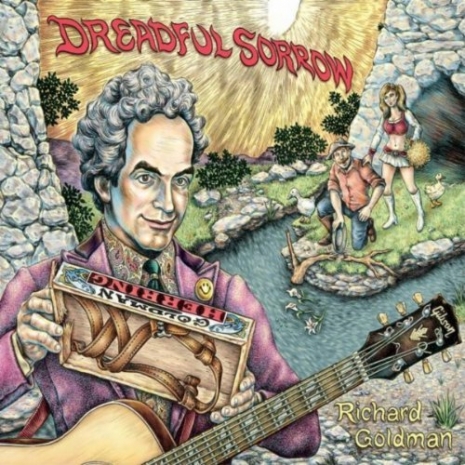
Richard now views what he calls the “fatal flaw” in his original plan to be the next Jimmy Webb. “My songs are just a touch weirder,” with personal elements distinctive to his own songwriting. Plus, it wasn’t in him to write bland material or novelty numbers. “I wanted to be a songwriter that got covered by other people, but I didn’t write those kinds of songs.”
Last year, 45 years after he moved to L.A., Richard and his wife, Christie, relocated to New York City. Richard works from their apartment as a Hollywood copywriter, penning taglines and titles for TV and film. He says he’s “semi-retired.” He currently has no plans to release another album, though he continues to write and record new material.

On stage, 2013.
Though the original function of the records was to lose money, Almost Famous and Sweethearts are testaments to Richard Goldman’s unique gifts as a singer-songwriter. The records are among the rarest—and finest—tax shelter LPs.
Today, Richard doesn’t begrudge those responsible for the albums. “To be shocked or even mad that it happened to me 40 years ago seems counter-productive.” He also gets that the interest in, and appreciation of, his ‘70s work has been spurred by the intrigue surrounding “tax scam records.” “In some way, I am thrilled that this stuff was preserved in the musical amber of a tax shelter record.”
Richard has uploaded the songs of his that were used for the first version of Almost Famous, as well as the entirety of Sweethearts, to his YouTube channel. He’s also on Soundcloud.
Below is a 2010 video of Richard performing “Change It All,” a song that was included on the Almost Famous LP. It’s one of his prettiest tunes. The clip was captured using his computer’s camera, and there’s a nice moment that occurs near its conclusion. Wait for it…
Thanks to Marc Janssen for the Sweethearts images. Marc’s authorized reissues of Baby Grand albums, licensed from the musicians who played on them, can be found on Bandcamp and Discogs.
All photographs of Richard courtesy of Richard Goldman.
As I was completing this story, I learned that the brother of Richard’s manger-producer had his own tax shelter album. He told Richard that he didn’t know it existed until just a few months ago. The album of his material, though on a different label than Sweethearts, was also distributed by Album World in 1977.

Previously on Dangerous Minds:
‘Tax Scam Records’: Artist discovers albums of his songs were released by shadowy companies in 1977